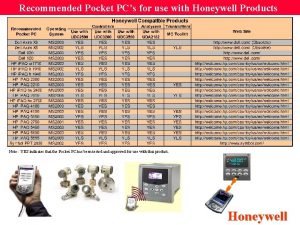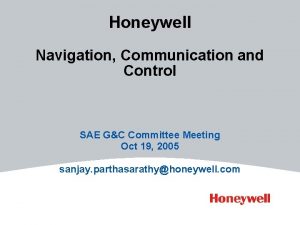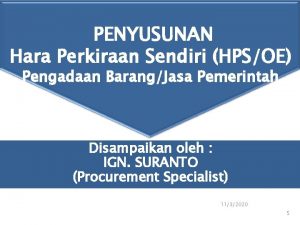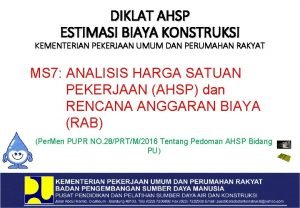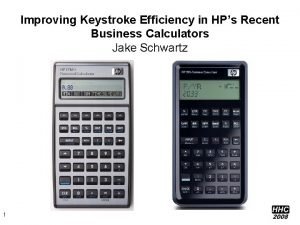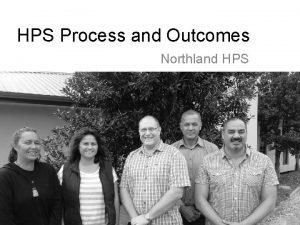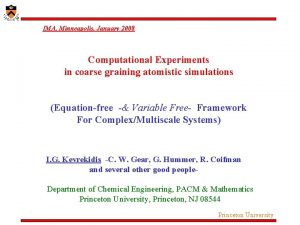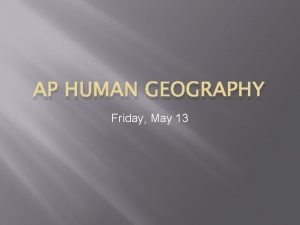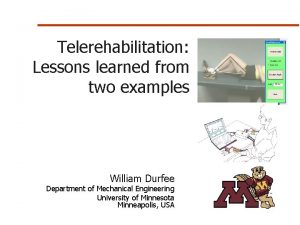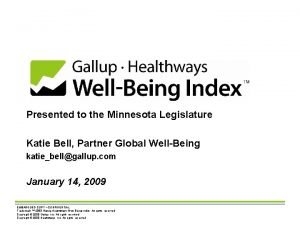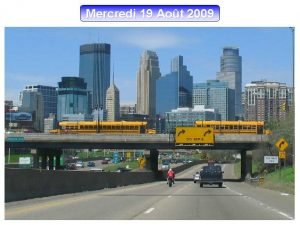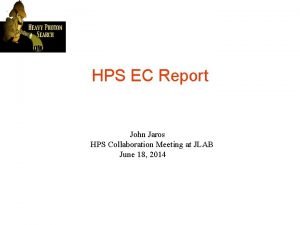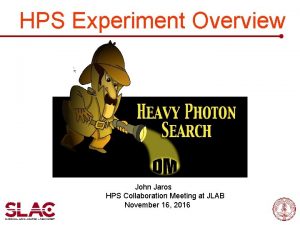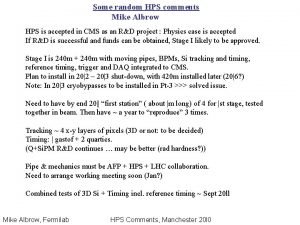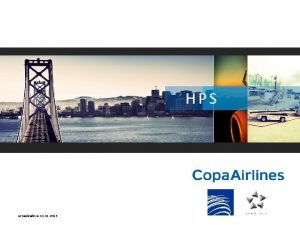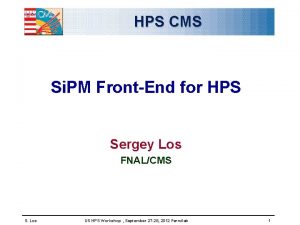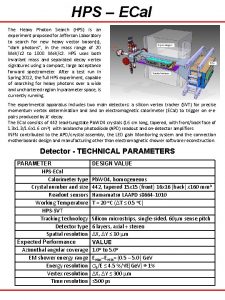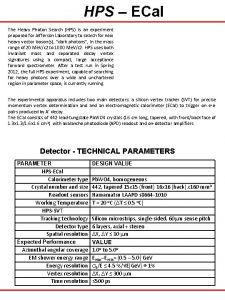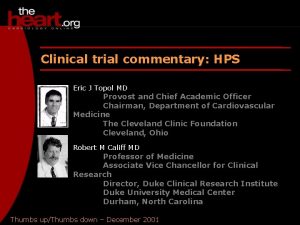HPS 2009 Meeting Minneapolis 12 16 July 2009















- Slides: 15

HPS 2009 Meeting Minneapolis 12 - 16 July 2009 International Atomic Energy Agency Efforts on Orphan Sources and Radioactively Contaminated Material in the Metal Recycling Industry E. Reber, V. Friedrich, L. Jova Sed, IAEA International Atomic Energy Agency

IAEA

Orphan disused teletherapy source accident in Samut Prakarn, Thailand (2000) §Teletherapy head with 15. 7 TBq (425 Ci) 60 Co source taken from storage location to be sold as scrap metal. §Three workers at junkyard died from radiation IAEA exposure.

Trans-border issues IAEA

Tarragona Scrap Metal Conference • Goals: • Share experiences • Contribute to the resolution of the problems IAEA

Overview • Meeting organized by the Spanish Nuclear Safety • • • Council (CSN) in cooperation with IAEA 250 participants and observers 66 countries represented 5 organizations represented 40 oral presentations made during 5 plenary sessions 4 panel sessions 38 posters presented IAEA

A Few Technical Insights • Scrap steel at clearance levels can activate alarms at portal monitors. • Detection systems at steel mills are normally optimized for gross gamma counting and may be more sensitive for the detection of photons than border monitoring equipment • Regulation of scrap metal collection and steel production facilities varies widely from country to country. In some countries licenses are issued and inspections related to radiation safety issues are conducted regularly. In some countries there are voluntary arrangements such as the Spanish Protocol. • Regarding border monitoring, one European country recorded the following statistics concerning detection of radioactive material: • NORM 80% • Orphan Sources 12% • Lightening rods 6% • Other 2% • Cost of detection systems at steel mills: ~100 k$ IAEA

Conclusions • Problem is global in nature and demands an urgent solution. • Root of the problem is deficiencies in the control of radioactive sources and radioactive material. Noted that many countries have made commitments to the Code of Conduct on the Safety and Security or Radioactive Sources. • Spanish experience with its Protocol has shown the value of an all-inclusive approach involving the scrap metal industry, the steel industry, national regulators, and the radioactive waste management organization. IAEA

Conclusions • Trans-border issues were highlighted: • Many countries feel that imported scrap metal contains most of the radioactive material that causes them problems • No requirement to report the rejection of a load of scrap metal at a border to the authorities in the neighbouring country • No international requirement for the certification of monitoring of scrap metal being imported into or exported from a country • Differing acceptance criteria at borders • A binding international protocol or agreement should be developed to unify the approach to trans-border issues concerning the presence of radioactive material in scrap metal. IAEA

Conclusions • Recycling of metal from the nuclear industry: • Potential presence of radioactive material in scrap metal from the nuclear industry has made the steel industry reluctant to accept scrap metal from this source. • Most of the metal from the nuclear industry that has been recycled has been used in a controlled application or returned for reuse within the nuclear industry. • The release of cleared metals has not yet gained acceptance. Agreement on acceptance criteria for radionuclides in metal scrap and processed metal would be helpful in this regard. IAEA

DS 411 IAEA Safety Guide – Orphan Sources and Other Radioactive Material in the Metal Recycling and Production Industries IAEA

SCOPE SCRAP METAL scrap yard ORPHAN SOURCES Abandoned Lost Stolen Misplaced CONTAMINATED METAL Decommissioning NORM from industries scrap yard RECYCLING scrap yard Scrap yard, segregation, shredding, melting, product finishing Clean product scrap yard Orphan sources Contaminated metal Contaminated products Contaminated by-products Investigation, return, waste management IAEA

Scope • Scope: sealed radioactive sources and other radioactive material (i. e. material contaminated with activation/fission products and/or NORMs) that are present in scrap metal • Focuses on responsibilities and actions from identification (detection) to regaining control (segregation and temporary storage) IAEA

Future IAEA Activities • DS 411 to be submitted to Member States of the IAEA for 120 -day comment period. Document should be published in 2010. • Input from Member States to be requested at the IAEA’s General Conference in Sept. 2009 regarding the initiation of an international undertaking regarding trans-border issues. IAEA

Thank you for your attention. Questions? Comments? IAEA

